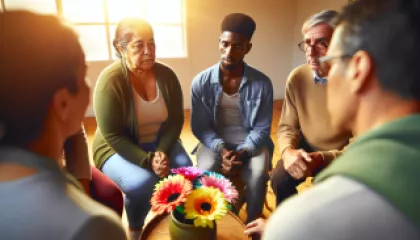Understanding Recovery: A Review of Emotional Abuse Healing Research
Emotional abuse, a form of violence that is often overlooked due to its invisible nature, has substantial and enduring impacts on individuals' mental, physical, and emotional well-being. Despite the pervasiveness of this issue, it remains under-researched, particularly in terms of healing and recovery processes. This article aims to provide a comprehensive review and synthesis of existing scholarly research on emotional abuse healing, highlighting key findings and identifying gaps in the current knowledge base.
What is Emotional Abuse?
Before delving into the healing process, it is vital to define what emotional abuse entails. Often occurring within personal relationships, emotional abuse involves manipulative behaviors that undermine an individual's self-esteem and autonomy. These behaviors can include belittling, controlling, gaslighting, and isolating the victim, causing long-term psychological harm.
The Impact of Emotional Abuse
Research has consistently demonstrated that emotional abuse can lead to a wide range of adverse health outcomes. Victims may experience anxiety, depression, post-traumatic stress disorder (PTSD), and other mental health conditions. Moreover, emotional abuse can result in chronic physical health problems, including cardiovascular disease, gastrointestinal disorders, and a weakened immune system.
The Healing Process: An Overview
The healing journey from emotional abuse is uniquely challenging. Unlike physical injuries where the healing progress is visible, emotional wounds are obscured, making the recovery process complex and non-linear. Nevertheless, researchers have identified several common stages in the healing process, including acknowledgement, understanding, rebuilding, and transformation.
Acknowledgement
The first step in healing from emotional abuse is acknowledging the abuse. This stage involves recognizing the harmful behaviors and their impacts on the victim's well-being. It is often accompanied by feelings of confusion, anger, and grief.
Understanding
The second stage of healing involves understanding the abuse and its context. At this point, victims may seek professional help to unpack their experiences and gain insight into the abuser's tactics and motivations. This process can lead to a sense of empowerment and liberation.
Rebuilding
Once victims have acknowledged and understood their experiences, they can begin rebuilding their lives. This stage may involve establishing healthy boundaries, building supportive relationships, and developing coping strategies for managing emotional triggers.
Transformation
The final stage of healing is transformation. Here, victims reclaim their identities and autonomy, often emerging stronger and more resilient than before. However, it's important to note that healing is not about erasing the past but rather integrating the experience into one's life narrative in a way that fosters growth and resilience.
Supporting Emotional Abuse Recovery
Studies suggest that support plays a crucial role in healing from emotional abuse. This can come in various forms, including therapy, support groups, self-help resources, and positive relationships. Therapeutic interventions, such as cognitive-behavioral therapy (CBT) and trauma-focused therapy, have proven particularly effective in assisting victims in navigating their healing journey.
Gaps in Current Research
Despite these advancements, there remain significant gaps in our understanding of emotional abuse healing. Notably, research is largely based on Western, individualistic perspectives, thus overlooking the potential influences of culture, community, and societal factors on the recovery process. Furthermore, there is a dearth of longitudinal studies examining the long-term trajectories of healing, which is crucial for tailoring interventions to individuals' evolving needs.
Conclusion
In conclusion, emotional abuse is a pervasive issue with profound impacts on victims' well-being. While research on the healing process has made significant strides, there is much more to be understood. It is crucial for future studies to adopt a more holistic and culturally sensitive approach, as well as to focus on long-term recovery outcomes. By doing so, we can not only enhance our theoretical understanding of emotional abuse recovery but also inform practice and policy, ultimately fostering healing and resilience among survivors.








